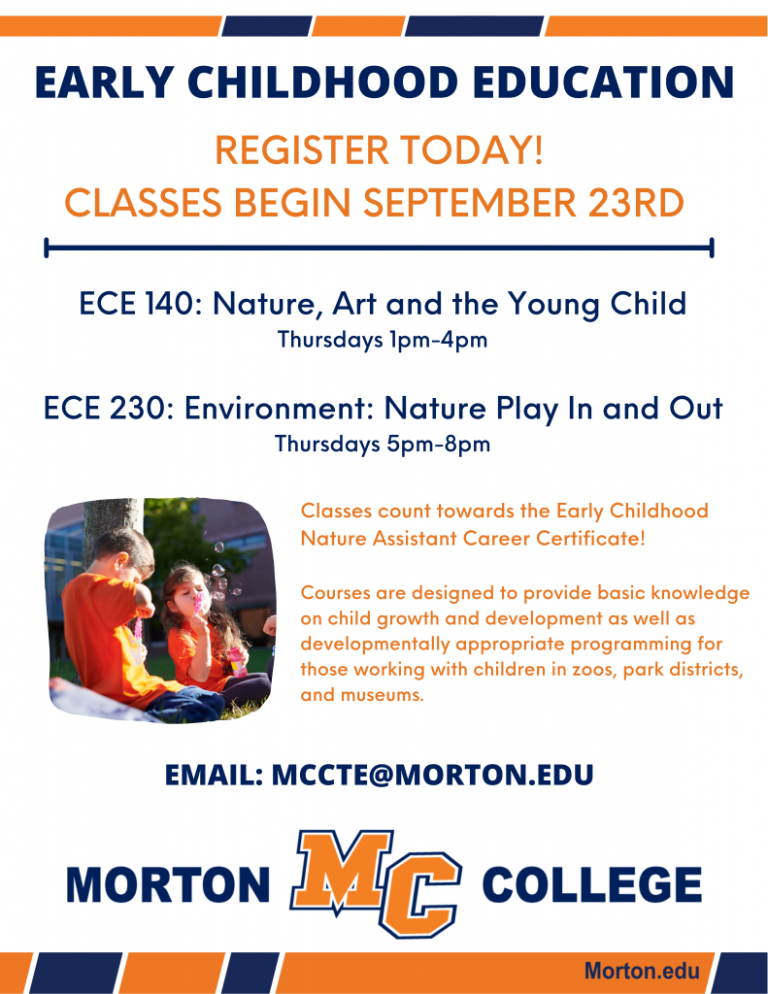Preschool Vs Prek: The Ultimate Battle for Early Education!

Preschool and Pre-K are two different early education programs for young children aged 3 to 5. Preschool and Pre-K are both early education programs designed for children between the ages of 3 and 5.
These programs play a crucial role in a child’s development, providing them with the foundations needed for their future academic success. However, despite their similarities, there are distinct differences between preschool and Pre-K. Understanding these differences can help parents make the best choice for their child’s education.
We will compare and contrast preschool and Pre-K, examining factors such as curriculum, structure, and goals, to help parents make an informed decision about which program is the right fit for their child. So, whether you are a parent considering early education options or simply curious about the differences between preschool and Pre-K, read on to discover more about these two important stages in a child’s learning journey.
Unraveling Preschool Vs Prek
Choosing the right early childhood education program for your child is a crucial decision that can significantly impact their development. When it comes to preschool and prek, understanding the key differences in curriculum, their impact on child development, and the learning environment can guide parents towards making an informed choice. Let’s dive deeper into the distinctive features of preschool and prek and unravel the disparities that exist between the two.
Key Differences In Curriculum
The curriculum plays a pivotal role in shaping a child’s educational journey during the early years. Preschool and prek differ in their approaches to curriculum design and content.
- Preschool typically focuses on providing a broad range of activities that foster socialization, creativity, and play-based learning. The emphasis is on building foundational skills such as communication, problem-solving, and fine motor development.
- Prek, on the other hand, places greater emphasis on academic preparation for kindergarten. The curriculum is more structured and designed to enhance language and literacy skills, numeracy, and critical thinking abilities.
This fundamental difference in curriculum design means that preschool primarily lays the groundwork for future learning experiences, while prek aims to prepare children with the necessary skills and knowledge for a successful transition to formal schooling.
Impact On Child Development
The choice between preschool and prek can have a profound impact on a child’s holistic development. Here’s how:
- Social and Emotional Development: Preschool provides valuable opportunities for young learners to engage in cooperative play, interact with peers, and develop essential social skills, such as sharing and empathy. Prek, being more academically focused, also offers similar social interaction but additionally introduces more structured group activities to enhance collaboration and independence.
- Cognitive Development: Preschool promotes cognitive growth through hands-on exploration and experimentation. Children are encouraged to use their imaginations and critical thinking abilities. In prek, the curriculum facilitates the development of more specialized cognitive skills, like pre-reading, pre-writing, and problem-solving, which are vital for kindergarten readiness.
- Language and Communication Skills: Preschool offers a language-rich environment where children learn to express themselves verbally, understand instructions, and develop pre-literacy skills. In prek, language and communication skills continue to be fostered, with an increased focus on phonemic awareness, vocabulary expansion, and early reading activities.
Learning Environment And Structure
The learning environment in both preschool and prek significantly influences a child’s engagement, motivation, and overall growth.
| Preschool | Prek | |
|---|---|---|
| Learning Approach | Play-based | Structured and play-based |
| Classroom Setting | Less structured, promotes exploration, and free choice | Structured with more teacher-led activities and gradual introduction of routines |
| Teacher’s Role | Facilitator and supporter of children’s self-directed learning | Facilitator, instructor, and guide in a more structured learning environment |
Preschool classrooms typically offer flexible routines and fewer rules, allowing children to explore and learn at their own pace. In prek, the learning environment becomes more structured, introducing children to routines and expectations similar to those of a formal classroom setting.
Ultimately, the choice between preschool and prek depends on various factors, such as the child’s individual needs, educational goals, and personal preferences. Understanding the key differences in curriculum, the impact on child development, and the learning environment can help parents make an informed decision that sets their child on a path to success.
Preschool’s Approach
Preschool is an essential stepping stone in a child’s early education, where they begin to develop essential skills that will lay the foundation for their future academic success. One of the key aspects of preschool education is its approach, which is centered around holistic development through play-based learning and social interaction.
Focus On Play-based Learning
Preschools understand the importance of play in a child’s learning journey. Instead of relying solely on traditional teaching methods, they create an environment where children can learn through engaging activities and play. Play-based learning fosters curiosity, creativity, and problem-solving skills. Children are encouraged to explore their interests, make choices, and engage in hands-on experiences that enhance their cognitive, motor, and social skills. Through play, they acquire new knowledge, build connections, and develop a love for learning that lasts a lifetime.
Emphasis On Social Skills
Social skills play a vital role in a child’s overall development. Preschools recognize this and prioritize the development of social skills alongside academic learning. In a preschool setting, children are encouraged to interact with their peers, communicate their thoughts and feelings, and navigate social situations. Through group activities, circle time, and collaborative projects, children learn to share, take turns, resolve conflicts, and show empathy toward others. These experiences enhance their emotional intelligence, promote positive social behavior, and lay the foundation for effective communication and collaboration in the future.
Age Group Typically Served
Preschools typically serve children in the age group of 3 to 5 years old. This age range is crucial for a child’s early development, as it is during this time that they are highly receptive to learning and experiencing new things. Preschools understand the specific needs and abilities of children in this age group and design age-appropriate activities that cater to their developmental milestones. They provide a nurturing and stimulating environment where children can thrive, develop self-confidence, and cultivate a love for learning.
Prek: Preparing Young Minds
‘Prek: Preparing Young Minds’ offers a dynamic and innovative approach to early childhood education, distinguishing itself from traditional preschools. With a focus on developing essential cognitive and social skills, Prek sets the foundation for children to thrive academically and emotionally in their later years.
Introduction To Academic Concepts
Prek, also known as Pre-Kindergarten, is an early childhood education program aimed at preparing young minds for the transition to Kindergarten. This crucial educational stage focuses on introducing academic concepts in a nurturing and engaging environment. Through a well-rounded curriculum, Prek teachers ignite a love for learning and lay a solid foundation for the future academic journey of children.
Pre-literacy And Numeracy Focus
Prek sets the stage for children to develop essential pre-literacy and numeracy skills. Through creative and interactive activities, children are exposed to the world of letters, sounds, and words. They engage in storytelling, rhyming games, and phonics exercises, building their phonological awareness and fostering an early love for reading. Alongside pre-literacy, Prek also places a strong emphasis on numeracy, introducing basic mathematical concepts such as counting, number recognition, and simple operations. By incorporating hands-on activities and games, children develop a solid mathematical foundation that will benefit them throughout their education.
Age Group Typically Served
Prek programs are designed for children of ages four and five. This age group ensures that children are developmentally ready to engage with age-appropriate academic concepts, socialize with peers, and benefit from structured educational activities. With a focus on play-based learning, Prek strikes a balance between fostering essential skills and allowing children to explore their creativity and individual interests. The programs are tailored to meet the unique needs of young minds and provide a smooth transition into the formal education system.
Comparing Classroom Dynamics
When it comes to early childhood education, understanding the differences between preschool and pre-K can help parents make informed decisions for their children. One important aspect to consider is the classroom dynamics, which includes factors like teacher-student ratios, daily schedules and routines, and parental involvement expectations. Let’s delve deeper into these aspects to better understand the distinctions between preschool and pre-K.
Teacher-student Ratios:
In preschool, the teacher-student ratios tend to be relatively higher, typically ranging from 1:8 to 1:12. This means that for every teacher, there are up to twelve students under their care. As the classroom size increases, individual attention and interaction with each child may be limited.
On the other hand, pre-K programs typically have lower teacher-student ratios, often ranging from 1:6 to 1:10. With fewer students per teacher, pre-K allows for more individualized attention and a better opportunity for teachers to meet the specific needs of each child in the classroom.
Daily Schedules And Routines:
Preschool programs usually have a more flexible daily schedule, incorporating a mix of structured activities, free play, and naptime. The emphasis is often on socialization, basic skill development, and providing a nurturing environment for young learners.
In contrast, pre-K programs follow a more structured and academically focused daily schedule. The curriculum is designed to prepare children for the transition to kindergarten by introducing them to foundational skills like pre-reading, pre-writing, and basic math concepts. The emphasis is placed on preparing children for the academic rigors they will encounter in elementary school.
Parental Involvement Expectations:
| Preschool | Pre-K | ||
|---|---|---|---|
| Parental Involvement | Expectations | Parental Involvement | Expectations |
| Emphasis on | Parental | Strong | Involvement |
| Communication | with parents | and Engagement | in child’s learning |
| Opportunities for | Volunteering | and Participation | in Classroom |
In preschool, there are usually opportunities for parent involvement, but the expectations are not as strong as in pre-K. Parent-teacher communication plays a vital role, in keeping parents informed about their child’s progress and any concerns that may arise. However, parental involvement, such as volunteering or participating in classroom activities, is often less pronounced.
Pre-K, on the other hand, places a strong emphasis on parental involvement to support a child’s learning. Communication between parents and teachers is encouraged, providing updates on academic progress, behavior, and any areas that may need attention. Additionally, pre-K programs often provide various opportunities for parents to volunteer and actively participate in the classroom, fostering a collaborative and engaged learning environment.
‘preschool Vs Prek: The Ultimate Battle’
When it comes to early childhood education, the battle between preschool and Prek is a never-ending debate. With parents constantly looking for the best start for their little ones, it’s important to understand the key differences between these two options. In this blog post, we will delve into the ultimate battle of Preschool Vs Prek. From skills assessment and outcome expectations to the transition to kindergarten readiness and long-term educational benefits, we will explore every aspect to help you make an informed decision. Let’s dive right in!
Skills Assessment And Outcome Expectations
One of the primary differences between preschool and Prek lies in the skills assessment and outcome expectations. While preschool focuses on providing a safe and nurturing environment for young children to explore, play, and develop basic social and cognitive skills, Prek takes it a step further. Prek programs typically have a more structured curriculum, aimed at preparing children for kindergarten. In Prek, the emphasis is on building and enhancing specific skills such as pre-reading, pre-writing, and basic math.
Transition To Kindergarten Readiness
The transition from early childhood education to kindergarten readiness is a crucial milestone for every child. Preschool and Prek both play a significant role in this transition. However, Prek often offers a more focused approach. Prek programs prioritize the development of essential skills needed for success in kindergarten, such as letter recognition, phonemic awareness, counting, and problem-solving. This targeted preparation can give children an added advantage when they enter the structured academic environment of kindergarten.
Long-term Educational Benefits
The long-term educational benefits of preschool and Prek cannot be overstated. Both options provide a solid foundation for future academic success. However, Prek’s more structured curriculum and targeted skill development can potentially lead to greater long-term benefits. Studies have shown that children who attend Prek are more likely to have higher achievement levels, better social skills, and improved behavior in elementary school and beyond. The early exposure to academic concepts and the fostering of independence and critical thinking in Prek can have a lasting impact on a child’s educational journey.
Conclusion
Whether you choose preschool or Prek for your child, it’s crucial to consider their individual needs, interests, and learning styles. While both options have their distinct advantages, Prek’s focus on kindergarten readiness skills and long-term educational benefits may sway some parents. Ultimately, the decision should be based on what you believe will provide the best foundation for your child’s future success.

Credit: www.modeldmedia.com
Making The Choice
Preschool or Pre-K? Making the choice for your child’s early education can be overwhelming. Discover the differences and find the best fit for your little one’s needs.
Considerations For Parents
When it comes to making the choice between preschool and pre-k for your child, there are several important considerations for parents to keep in mind. It’s crucial to assess your child’s readiness, gather resources for informed decision-making, and ultimately choose what will best support their development and learning. By carefully thinking through these factors, parents can make a choice that sets their child up for success.
Assessing Child Readiness
Assessing your child’s readiness is a vital step in deciding whether preschool or pre-k is the right fit. Every child develops at their own pace, and considering their individual strengths and areas for growth is essential. Look for signs that indicate your child is ready for a more structured learning environment, such as:
- Stronger social-emotional skills
- Greater independence in self-care tasks
- An interest in learning and exploring new concepts
- Improved attention span and the ability to follow simple instructions
While these factors can vary from child to child, they can serve as valuable indicators of readiness. However, it’s essential to remember that each child is unique, and there is no one-size-fits-all approach when it comes to their educational journey.
Resources For Informed Decision-making
When making a decision about preschool or pre-k, parents should gather resources to ensure they make an informed choice. Taking the time to research and explore available options can provide valuable insight into what each program offers. Consider the following resources:
| Resource | Description |
|---|---|
| Local School and District Websites | Check your local school district’s website for information on the various preschool and pre-k programs available in your area. |
| Word-of-Mouth Recommendations | Reach out to friends, family, and neighbors who have children in preschool or pre-k and ask about their experiences and recommendations. |
| Teacher and Administrator Interviews | Set up interviews with teachers and administrators at prospective schools to ask questions about curriculum, teaching methods, and educational philosophy. |
| Online Reviews and Forums | Search for online reviews and forums discussing local preschool and pre-k programs to gather perspectives from other parents in the community. |
By utilizing these resources, parents can gain a better understanding of what each program offers and make an educated decision based on their child’s needs and preferences.
Frequently Asked Questions Of Preschool Vs Prek
What Is The Difference Between Preschool And Prek?
Preschool usually refers to programs for 3- to 4-year-olds, focusing on play-based learning and social development. Prek, or Prekindergarten, is typically for 4- to 5-year-olds and includes more structured learning to prepare them for kindergarten.
What Are The Benefits Of Enrolling In Preschool?
Preschool provides a nurturing environment for children to develop important skills, such as social interaction, communication, and problem-solving. It promotes cognitive development, prepares children for kindergarten, and enhances their readiness for future academic success.
What Can My Child Learn In Prek?
Prek focuses on preparing children for kindergarten by introducing basic academic concepts such as literacy, numeracy, and language skills. It also offers opportunities for socialization, emotional development, fine motor skills, and independence, fostering a love for learning and building a strong foundation for future education.
Is Preschool Or Prek Mandatory For My Child?
Preschool and Prek are not typically mandatory, but they provide valuable early education experiences that can greatly benefit children. However, it ultimately depends on your local education regulations, so it’s best to check with your school district or state guidelines.
Conclusion
To summarize, understanding the differences between preschool and Pre-K is crucial for parents seeking the best educational options for their children. Preschool focuses on social and emotional development, while Pre-K places a greater emphasis on academic readiness. By considering their child’s individual needs and goals, parents can make an informed decision that sets the foundation for a successful educational journey.
Choosing either option ensures a nurturing environment that supports early learning and prepares children for their academic future.

Emma combines her teaching experience with her writing skills to produce engaging and informative content. She covers a range of topics, from classroom management to innovative teaching techniques.






